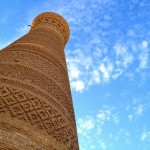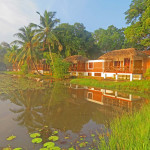Michael Edwards discovers in his guide to Kochi it surprises for both India first timers and veterans
Kochi isn’t what it seems. Fort Kochi doesn’t have a fort. Few Jews live in Jew Town. And the city has an elected communist government.
Whilst a tsunami usually bring destruction, a medieval tsunami brought prosperity to Kochi; shifting sands opened up the city’s harbour for Silk Road and Spice Route lucrative trade. That earned the city the Queen of the Arabian Sea title. Whilst its Chinese fishing nets have become the city’s symbol.
Indians from the frenetic north flock to Kochi in India’s Deep South. It is their Cornwall, and green Kerala, liberally watered by the monsoon, is God’s Own Country. Though Keralan folk may not agree on which God. In a country with a history of bloody religious tensions, it is bizarre and strangely reassuring to hear the imam’s call to prayer as you walk to the synagogue.

After a direct flight Air India flight from Gatwick, touching down at the 100% solar-powered futuristic Kochi airport is a surprisingly serene arrival. Visitors are spared the frenetic crowded chaos of some of India’s busier airports. For first time visitors to India, Kerala is less of a culture shock, less in your face.
Yes, your taxi will slalom through cows, dogs, goats, handcarts, mopeds and tuk-tuks on the pock-marked road into Kochi. But there are less cows, dogs, goats etc than you would find in other Indian cities. The atonal, discordant symphony of blaring horns and grinding gears isn’t entirely deafening. Soon the taxi will sweep across waterway after waterway.
Kochi alleviates the traffic congestion with a water metro of 75km of routes, combining with bus and trains, to speed up journeys. Cruising on Lake Vemanbad, India’s largest lake, as purple flowering wreathes of water hyacinths drift by, sometimes topped by white egrets, is as soul-soothing as travel gets in India.
Your voyages will take you past Willingdon Island, controversially manmade in the 1930s, blessed in the 1940s when its harbour helped with the war effort. Though its construction of landing craft for an amphibian assault on Japan proved unnecessary.


Remember, that it was Christopher Columbus’ ambition to find this exotic Malabar coast of spices when he sailed west rather than east back in 1492. Eventually, it was the Portuguese Vasco de Gama who headed the wave of colonial invasions.
Invariably, the winners of history write the history books and destroy evidence of their predecessors. Only St Francis church survives, from all the Catholic Churches built after Vasco de Gama’s arrival to Kochi in 1502. A plaque commemorates that the Portuguese explorer was briefly buried there until his family returned his bones to Portugal.
After the Portuguese it was the turn of the Dutch to play the role of the colonial masters before they gave way to the British. Even the Indian name change to Kochi, from the anglicised British Empire’s Cochin, is modern India’s attempt to reclaim history.
Another Kochi oddity is that the Dutch Palace, aka Mattancherry Palace, was built by the Portuguese in 1545 and gifted to the Kochi King to atone for the sacking of a temple; long before the Dutch became the colonialists.
A rarity in India, the road leading to the chandelier-laden synagogue has been pedestrianised, becoming a home for antiques, art and textiles shops. With Sara Cohen’s embroidery fusing religious and needlework traditions.


The place to stay in Mattancherry is the Ginger House Museum Hotel, especially as its restaurant has the rarity of an alcohol licence giving the opportunity for a cool beer. Owner Majnu prides himself on a banquet of an authentic Indian breakfast. As well as 80,000 square feet displaying antiques, the hotel’s palatial bedrooms also serve as antiques showrooms.
The Ginger House is merely an appetiser for the Kerala Folklore Museum. An imposing three storey ark of dark wood, stone and tiles from 25 Keralan heritage buildings; a stunning and historic collage of Malabar, Kochi and Travancore architectural styles. So large that it houses over 6,000 artefacts representing almost every aspect of Keralan life over the centuries. A vast collection – with onsite culture performances too – that goes some way to representing Kochi’s diverse history.
Tell Me More About this guide to Kochi in Kerala
The Ginger House Museum Hotel Jew Town Road, Mattancherry, Kochi, Kerala 682002, India.
T: +91 95262 13400 E: museumhotelkochi@gmail.com
Rooms at The Ginger House Museum Hotel from around £230 per night which includes a full Indian breakfast.






